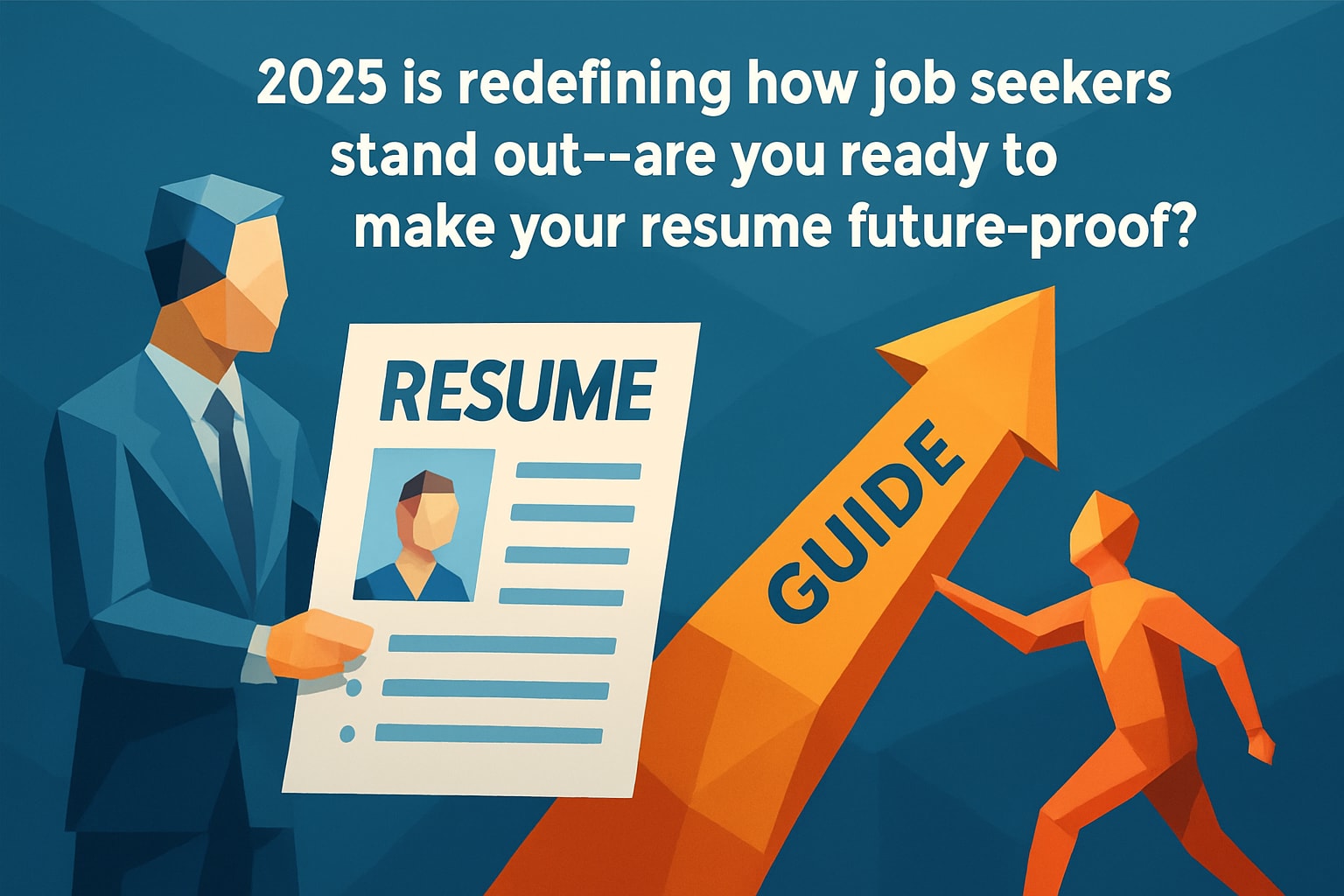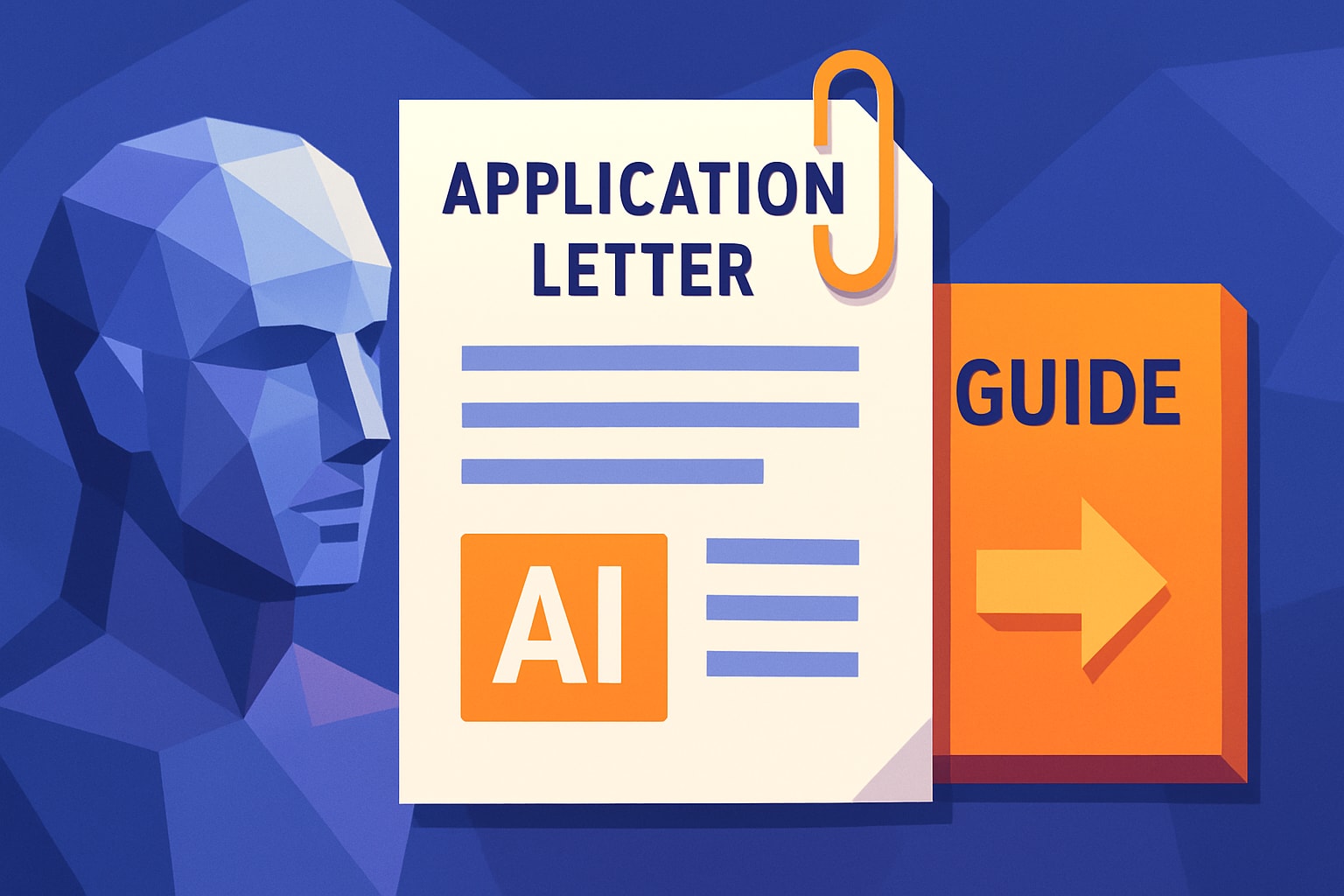- Home
- Blog
- Resume Writing
- Job Applying Resume Guide: Essential Steps for 2025 Success
Job Applying Resume Guide: Essential Steps for 2025 Success
Master your job applying resume for 2025 with expert steps on trends, ATS optimization, personalization, and formatting to boost your interview success.

2025 is reshaping the way professionals approach the job applying resume, pushing job seekers to adapt quickly if they want to stand out. Today, creating a job applying resume goes far beyond listing experience, it’s about understanding evolving employer expectations and leveraging new strategies. This guide provides a step-by-step approach to ensure your job applying resume is ready for the future, from identifying key trends and preparing essential content to optimizing for technology and personalizing every application. Get ready to unlock actionable insights and maximize your interview opportunities with a future-proof job applying resume.
Understanding Resume Trends and Employer Expectations in 2025
In 2025, the job applying resume has become a dynamic tool reflecting the new realities of the workforce. To succeed, job seekers must understand how employer expectations are evolving and adapt their approach to stand out in a crowded market.

The Impact of Evolving Work Environments
The workplace has shifted dramatically, and the job applying resume must now address hybrid, remote, and flexible roles. Employers are looking for candidates who thrive in digital-first environments. Skills like adaptability and digital collaboration are no longer optional, they are essential.
For example, recent research reveals that 68% of employers specifically seek hybrid-ready candidates. Modern resumes should highlight experience with remote tools, cross-functional teamwork, and self-management. Including concrete examples of adapting to change or leading virtual projects can set your application apart.
What Recruiters Want in 2025
Recruiters in 2025 prioritize skills-based hiring over traditional credentials. The job applying resume should emphasize measurable achievements and a commitment to continuous learning. Leading companies such as Google and IBM have shifted focus from degrees to demonstrable skills and impact.
Showcasing quantifiable results, like “increased sales by 20% through digital outreach,” demonstrates value. Highlighting certifications, online courses, and upskilling efforts signals to employers that you are proactive and future-oriented. This approach helps your resume align with the evolving demands of hiring teams.
The Rise of AI and ATS in Screening
Almost all large organizations now use sophisticated AI-driven Applicant Tracking Systems (ATS) to screen resumes. In fact, 95% of Fortune 500 companies rely on these systems to filter candidates efficiently. The job applying resume must be formatted and keyword-optimized to pass this initial screening.
AI looks for specific keywords, clear formatting, and relevant experience. If your resume is not ATS-friendly, it may never reach human eyes. For practical advice on optimizing your resume for these systems, explore these ATS-friendly resume tips for 2025. Adapting to these requirements is now critical for job search success.
Personal Branding and Online Presence
Today, employers expect your job applying resume to be part of a larger professional brand. Integrating your LinkedIn profile or digital portfolio is increasingly important. Recruiters routinely cross-reference resumes with online profiles to verify experience and assess cultural fit.
A strong online presence can reinforce your qualifications and showcase additional work samples or recommendations. In fact, 70% of recruiters screen candidates’ social media, making it essential to maintain professionalism and consistency across platforms. Including links and QR codes can further enhance your application.
Diversity, Equity, and Inclusion (DEI) in Resumes
DEI is now a top priority for many organizations, and the job applying resume should reflect this shift. Using inclusive language, sharing diverse experiences, and, when appropriate, including a DEI statement can demonstrate your alignment with these values.
For example, companies like Salesforce actively seek candidates who highlight inclusive leadership or participation in diversity initiatives. Mentioning relevant ERG (Employee Resource Group) involvement or community outreach can also strengthen your application. Embracing DEI in your resume signals that you are both aware of and committed to the priorities shaping the modern workplace.
Step 1: Gathering and Organizing Your Resume Content
Creating a standout job applying resume in 2025 begins with thoughtful preparation. Before you start formatting, invest time in gathering and organizing the right information. This foundational step ensures your resume is relevant, impactful, and ready to meet employers’ evolving expectations.

Identifying Core Skills and Achievements
Start by auditing your work history and projects to pinpoint the strengths that matter most for your job applying resume. Focus on skills that are both in-demand and quantifiable. List achievements that showcase measurable results, such as “increased sales by 20%” or “led a remote team of five.”
- Review recent job descriptions for recurring skills
- Write accomplishment statements using action verbs
- Quantify results wherever possible
A job applying resume that highlights relevant, proven skills demonstrates immediate value to employers. This approach also helps you tailor your resume content efficiently for each application.
Collecting Essential Personal and Professional Details
Gather all essential personal and professional information before drafting your job applying resume. This includes your full name, up-to-date contact details, and professional email address. Collect your education history, certifications, and licenses.
Be sure to include any remote work or freelance experience, as these are highly valued in today’s workplace. Document the details of each role, including dates, locations, and major responsibilities. Keeping this information organized ensures your job applying resume is both comprehensive and easy to update.
Researching Target Roles and Keywords
Analyze job postings for your desired positions to discover which skills and qualifications are most sought after. Use platforms like LinkedIn and Indeed to identify trending keywords and requirements.
- Make a list of must-have skills and qualifications from at least three job ads
- Note industry-specific terminology and software
- Use these terms to guide your job applying resume content
Incorporating the right keywords increases your chances of passing initial screenings and reaching the interview stage. This research ensures your job applying resume is both targeted and competitive.
Compiling Supporting Materials
Prepare all supporting documents that may strengthen your job applying resume. Gather professional references, digital portfolios, and work samples relevant to your target role.
Decide when and how to include supplementary links, such as a LinkedIn profile or a portfolio website. If you’re in a creative or technical field, consider adding a QR code that links directly to your work. Having these materials ready streamlines the application process and adds credibility to your job applying resume.
Avoiding Common Content Mistakes
Avoid including outdated job duties, irrelevant skills, or unnecessary personal information on your job applying resume. Data shows that 54% of resumes are rejected for irrelevant content. To minimize errors, double-check each section for relevance and accuracy.
Common mistakes include listing hobbies, using generic statements, or including personal identifiers like age or marital status. For more advice on what to leave out, see this Common resume mistakes to avoid guide. A clean, focused job applying resume increases your chances of making it past the first review.
Step 2: Structuring and Formatting Your Resume for 2025
Creating a standout job applying resume for 2025 requires more than listing your experiences. Structure and format now play a pivotal role in capturing attention and passing digital screenings. Let’s break down each step to ensure your resume meets modern standards.

Choosing the Right Resume Format
Selecting the optimal format is foundational for a job applying resume. In 2025, three main formats dominate: chronological, functional, and hybrid.
| Format | Best For | Key Features |
|---|---|---|
| Chronological | Steady career growth | Lists jobs by date |
| Functional | Career changers, gaps | Focuses on skills, less on dates |
| Hybrid | Most professionals | Blends skills and experience |
For executives and those with diverse backgrounds, a hybrid format often works best. Recent graduates may prefer functional formats to emphasize skills over limited experience. For a detailed breakdown, see this Resume formatting guide recruiters want.
Designing for Readability and Impact
Visual clarity is essential for your job applying resume. Use professional fonts like Arial, Calibri, or Helvetica, and keep font size between 10 and 12 points.
Break content into clear sections with bold headers. Use bullet points to highlight achievements and responsibilities. White space is your ally, making the document easier to scan.
Consistency in margins and spacing ensures your resume does not look cluttered. A visually appealing layout increases readability and keeps recruiters engaged with your qualifications.
Writing Powerful Summaries and Objectives
A compelling summary at the top of your job applying resume captures employer interest immediately. Summaries should blend top skills, measurable achievements, and clear career goals.
For example: “Detail-oriented marketing specialist with 5+ years of experience driving growth for SaaS startups. Expert in digital campaigns and team leadership, seeking to leverage analytics skills for a global tech firm.”
Tailor your summary to the job description, using keywords that align with employer needs. This approach sets the tone and positions you as a strong candidate from the start.
Detailing Experience with Results-Driven Language
When describing your professional history on a job applying resume, focus on quantifiable results. Begin each bullet point with a strong action verb and incorporate numbers to show impact.
Example using the STAR method:
- Increased sales by 20 percent within six months by implementing a targeted outreach strategy.
- Led a remote team of seven on a project that reduced costs by $50,000 annually.
This method demonstrates value and shows employers you can deliver measurable outcomes.
Integrating Digital Elements
Modern resumes often include digital touchpoints, which enhance a job applying resume’s credibility. Add a LinkedIn URL, personal website, or QR code linking to your online portfolio.
Interactive PDFs allow for clickable links, making it easy for recruiters to explore your work samples. Just ensure all links function correctly and keep the design clean.
Digital elements showcase your tech-savviness and make it easier for employers to verify your skills and experience.
Step 3: Optimizing for Applicant Tracking Systems (ATS)
Applicant Tracking Systems (ATS) have become the gatekeepers for the modern job applying resume. Navigating these automated filters is crucial to ensure your resume is seen by real recruiters.
Understanding how ATS works, optimizing keywords, and maintaining proper formatting are essential steps. Let us walk through each aspect to help your job applying resume pass the first digital hurdle.

Understanding How ATS Works
ATS software scans and ranks every job applying resume submitted online. These systems parse your information, breaking it down into categories like skills, experience, and education.
Common pitfalls include using graphics, headers in unusual places, or nonstandard section titles. If your job applying resume uses outdated formats, key information might not be recognized, causing your application to be missed.
To avoid this, stick to clear section headings and simple layouts. Remember, the ATS is searching for structured, relevant data, not creative design.
Keyword Optimization Strategies
Keywords are the lifeblood of ATS filtering. Start by analyzing job postings for the exact skills and requirements listed. Integrate those keywords naturally throughout your job applying resume, especially in your skills and experience sections.
Use synonyms and variations, but never force keywords. For a deeper dive on effective keyword placement and strategies, review the Mastering ATS: Optimize Your Resume and Stand Out in Your Job Search guide.
A targeted job applying resume that mirrors employer language is far more likely to make it through initial screens.
Formatting for ATS Compatibility
ATS systems favor simplicity. Avoid tables, images, and graphics, as these can confuse parsing algorithms. Choose standard fonts like Arial or Calibri, and use clear section headers such as "Experience," "Education," and "Skills."
Bullet points should be simple dots or dashes, and avoid using columns. Save your job applying resume as a Word document or PDF, depending on employer instructions.
Check this quick formatting checklist:
- Standard font and size
- No images or graphics
- Clear section headers
- Simple bullets
Testing Your Resume with Free ATS Tools
Before submitting your job applying resume, run it through a free ATS checker online. These tools simulate how your resume will be read by automated systems, flagging any formatting or keyword issues.
After making adjustments, retest your job applying resume to ensure optimal scores. Many job seekers find that a single round of feedback can significantly improve their chances of passing the ATS filter.
Regularly using these tools keeps your job applying resume up to date and competitive.
Updating for Ongoing ATS Changes
ATS technology evolves constantly. Stay informed about new trends, formatting shifts, and keyword preferences by following reputable career resources and resume experts.
Set a reminder to review your job applying resume quarterly, updating language and structure as needed. This proactive approach ensures your application remains effective as digital hiring standards change.
By consistently optimizing, your job applying resume will stand out in a crowded digital landscape.
Step 4: Personalizing and Tailoring Your Resume for Each Application
Personalizing your job applying resume for every position is essential in 2025. Employers expect clear alignment between your skills and their requirements. Tailoring ensures your application stands out, increases relevance, and maximizes your interview chances.
Analyzing Each Job Posting
Start by carefully examining each job posting before updating your job applying resume. Identify key requirements, responsibilities, and must-have skills. Highlight any unique qualifications or certifications the employer emphasizes.
Break down the posting into sections, such as required skills, preferred experience, and company values. Take notes on recurring keywords and phrases. This careful analysis allows you to match your resume content precisely to what recruiters seek.
Customizing Your Resume Content
Once you understand the job description, adapt your job applying resume so it mirrors the employer’s language and priorities. Adjust your professional summary, skills section, and work history to reflect the most relevant achievements.
For step-by-step guidance, see Tailoring your resume for job applications, which explains how to customize each section for maximum impact. Swap out or reorder skills to match the job’s top requirements. This targeted approach makes your resume more compelling and increases your chances of passing initial screening.
Highlighting Transferable and Future-Ready Skills
Showcase transferable skills and future-ready competencies on your job applying resume. Employers in 2025 value adaptability, digital literacy, and leadership across industries. For career changers, emphasize cross-industry experience and how your background prepares you for new challenges.
Use bullet points to highlight:
- Adaptability in hybrid or remote environments
- Experience with digital tools and collaboration
- Leadership and project management examples
This focus demonstrates your ability to grow and contribute in evolving workplaces.
Balancing Consistency and Customization
While personalization is crucial, keep your job applying resume’s core information consistent. Maintain accurate employment dates, education, and contact details across all versions. Only modify details that align with a specific job’s priorities.
Avoid over-customization, which can dilute your personal brand. Instead, strike a balance by updating summaries and skill highlights while preserving your unique strengths. Consistency builds trust and helps employers recognize your value.
Step 5: Polishing, Proofreading, and Submitting Your Resume
A polished job applying resume is the final step before you hit send. Attention to detail can be the difference between landing an interview and being overlooked. Set aside time for a thorough review, use the right tools, and follow best practices to stand out in the 2025 job market.
Final Editing and Proofreading Techniques
Meticulous editing is essential for every job applying resume. Start by reading your resume aloud and reviewing it line by line. Look for grammar mistakes, typos, and inconsistent formatting. Consider using proofreading tools such as Grammarly or Hemingway Editor to catch hidden errors.
Create a proofreading checklist that includes:
- Checking for missing contact details
- Ensuring consistent dates and job titles
- Verifying bullet point alignment
- Reviewing all hyperlinks for accuracy
Remember, 170+ Must-Know Resume Statistics for Job Seekers in 2025 reveal that even small mistakes can lead to rejection. Double-check every section to ensure your job applying resume is error-free.
Getting Feedback from Trusted Sources
Feedback is a valuable asset in perfecting your job applying resume. Ask a mentor, peer, or career coach to review your document. A fresh perspective can spot unclear statements, gaps in experience, or formatting issues you might miss.
Professional resume services offer expert critiques, often providing actionable suggestions. After feedback, many candidates report increased interview rates, demonstrating the value of outside input.
Consider this review process an investment. It helps ensure your job applying resume aligns with current employer expectations and stands out in a competitive field.
Ensuring Visual and Digital Consistency
Consistency is key for a professional job applying resume. Make sure your fonts, section headers, and spacing are uniform throughout. Check that all hyperlinks work, and ensure your digital elements, like LinkedIn URLs or QR codes, are functional.
Use a simple table to verify consistency:
| Element | Check for Consistency |
|---|---|
| Fonts | Same style and size |
| Bullet points | Aligned and uniform |
| Links | Active and accurate |
| Section headers | Clear and matching format |
Maintaining digital consistency also improves your resume’s compatibility with AI-powered Applicant Tracking Systems (ATS). This gives your job applying resume a better chance of passing initial screening.
Submitting in the Correct Format and Channel
Submitting your job applying resume in the right format is crucial. Most employers request resumes in PDF or Word formats. Always follow the specific instructions in the job posting.
Before submission, double-check file names and test your document on different devices to ensure it displays correctly. For online forms, copy and paste your resume into the fields and review the formatting before finalizing.
A well-prepared submission process shows attention to detail and professionalism. Choose the channel that matches the employer’s preference, and your job applying resume will make a strong, positive impression.
You've now seen how the job search landscape is evolving for 2025, from ATS optimization to showcasing your digital presence and tailoring every detail for maximum impact. With so many moving parts, it can feel overwhelming to put it all together—but you don’t have to do it alone. At CareerConcierge io, you have access to AI powered resume tools, professional templates, and a free ATS checker to help you stand out with confidence. If you’re ready to build a resume that truly gets noticed, Get Started Free and take the next step toward your dream job today.


